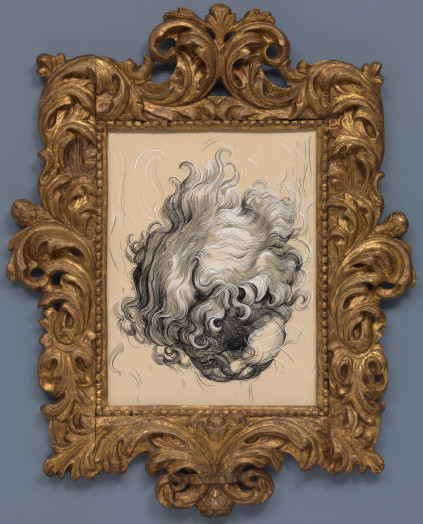Super Flatland: White Conduit Projects, London
there as an artistic strategy, either for aesthetic reasons or to generate confusion between what is
2D and what 3D. Others investigate the various ways in which reality might get ‘flattened’ – when it
goes online, for example.
There is a long history, both eastern and western, of artists being interested in flatness. The post-impressionists, most notably Gauguin, Van Gogh and Toulouse-Lautrec, adopted the aesthetics of flatness from Japanese models epitomised in the ‘Floating World’ print. The modern Japanese ‘Superflat’ movement, founded by Takashi Murakami, repurposes that history of using flattened forms as a means of critiquing the shallow emptiness of consumer culture.
That originated prior to the Internet, but is consistent with similar concerns about the superficiality of the virtual world. The show’s title combines that Japanese perspective with the cult Victorian novel ‘Flatland: A Romance of Many Dimensions’ by Edwin A. Abbott, which satirically presents the possibilities of worlds in which there are one, two or four dimensions rather than three. Hannah Hughes’ collages and Andrea V Wright’s sculptures directly reference the novel. The other artists pick up the various issues raised by the two continents’ engagements with flatness. Michael Craig-Martin and Paul Noble’s drawings play between two and three dimensions. Glenn Brown creates illusions of textured surfaces. The perspectival logic of Sinta Werner’s architectural photo-collages isn’t what it first seems, and the same is often true of Malcolm Crocker’s paintings of futuristic cityscapes. Sinta Tantra’s geometric abstractions create space without quite occupying it. Kate Groobey animates flatness through pointedly comical dances, inspired by a residency in Japan. Ori Gersht’s ‘Floating World’ digital combinations of reflected gardens reference the classic Japanese ukiyo-e woodblock prints – some of which will also be included. And Miho Sato, Yuichiro Tamura and Yuuki Hourichi - appropriately in a gallery with Japanese connections - update the tradition ‘from within’.


